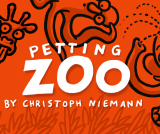“Hope is not a strategy”, says educator and design activist Kiran Bir Sethi. For the past four years, Sethi has been employing design thinking to develop solutions to some of the most pressing social problems in India. Her approach motivates school children to be the change that needs to happen in the world.
Sethi, a graphic designer by training, started the Design for Change Contest to fight the “don’t know, don’t care” attitude that is especially prevalent among the youth. Her campaign works to infect children with an “I can” virus, instilling the belief that they can work towards solutions for everything - from litter on the street, to pressurising authorities to ban child marriages, to teaching parents to read and write, and combating loneliness.
At Riverside School in Ahmedabad, which Sethi started in 2001, she designed a curriculum that emphasises and integrated responsibility of teachers, parents and learners in education, while the system draws on aspects of design thinking to nurture curious, competent and creative future generations. Simply describing her approach to education as “common sense”, Sethi’s curriculum is being used by schools across India while the Design for Change Contest has infected the lives and attitudes of some 250,000 children across 22 countries.
While making school education relevant in a real world context drives Sethi’s work, she also:
- Documents all process and outcomes for future refinement and application in other education contexts.
- Launched “A Protagonist in every Child (aProCh)”, a long-term campaign that engages children in large cities.
- Was named an Ashoka Fellow in 2008 in recognition of her work.
- Believes that Design for Change is a movement with the ability to positively affect the lives of a billion people.
- Propagates that real-world change starts with applying innovative solutions in our own lives and communities first.















